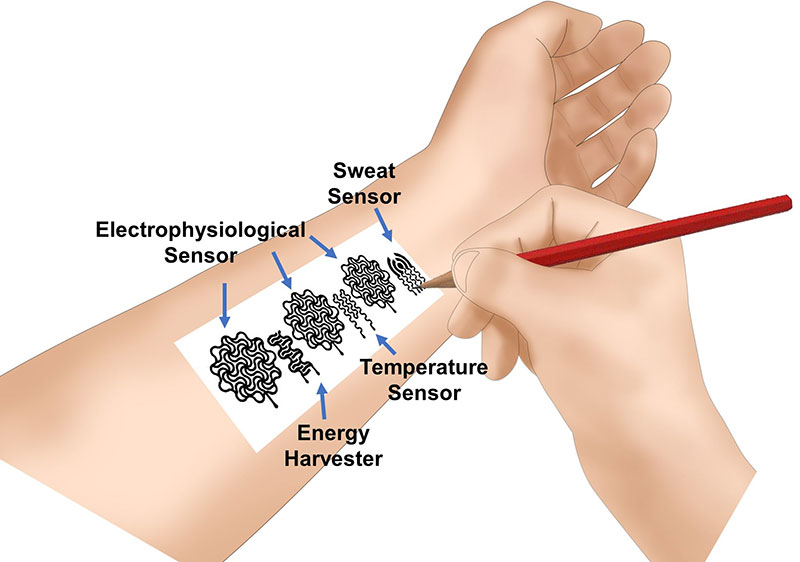Some of the most widely used wearable devices are applications for assessing and monitoring vital signs. However, they are typically complex devices and tend to be expensive and fragile. Now, researchers at the University of Missouri have invented a method of using simple graphite pencils and paper to create highly functional bioelectronic devices.
Read more Graz University Researchers Develop Tattoo Electrodes For Long-Term EEG Brain Monitoring
The researchers said their discovery could have broad future applications in home-based, personalized health care, education and remote scientific research such as during the COVID-19 pandemic.
Their findings are published in the journal Proceedings of the National Academy of Sciences.
Zheng Yan, an assistant professor in the College of Engineering, said many existing commercial on-skin biomedical devices often contain two major components — a biomedical tracking component and a surrounding flexible material, such as plastic, to provide a supportive structure for the component to maintain an on-skin connection with a person’s body, reports Eric Stann in Mizzou News.
“The conventional approach for developing an on-skin biomedical electronic device is usually complex and often expensive to produce,” he said. “In contrast, our approach is low-cost and very simple. We can make a similar device using widely available pencils and paper.”

Leads in the pencil are made of various levels of graphite, clay and wax. Since their invention, they’ve been used for writing and drawing. In this new study, the researchers discovered that pencils containing more than 90% graphite are able to conduct a high amount of energy created from the friction between paper and pencil caused by drawing or writing. Specifically, the researchers found pencils with 93% graphite were the best for creating a variety of on-skin bioelectronic devices drawn on commercial office copy paper. Yan said a biocompatible spray-on adhesive could also be applied to the paper to help it stick better to a person’s skin. He said their next step would be to further develop and test the use of the biomedical components, including electrophysiological, temperature and biochemical sensors.
Read more New Stretchable E-Tattoo for Long-Term Uninterrupted Heart Monitoring
“For example, if a person has a sleep issue, we could draw a biomedical device that could help monitor that person’s sleep levels,” he said. “Or in the classroom, a teacher could engage students by incorporating the creation of a wearable device using pencils and paper into a lesson plan. Furthermore, this low-cost, easily customizable approach could allow scientists to conduct research at home, such as during a pandemic.”
An additional benefit to their approach, Yan said, is that paper can decompose in about a week, compared to many commercial devices that contain components that are not easily broken down.












